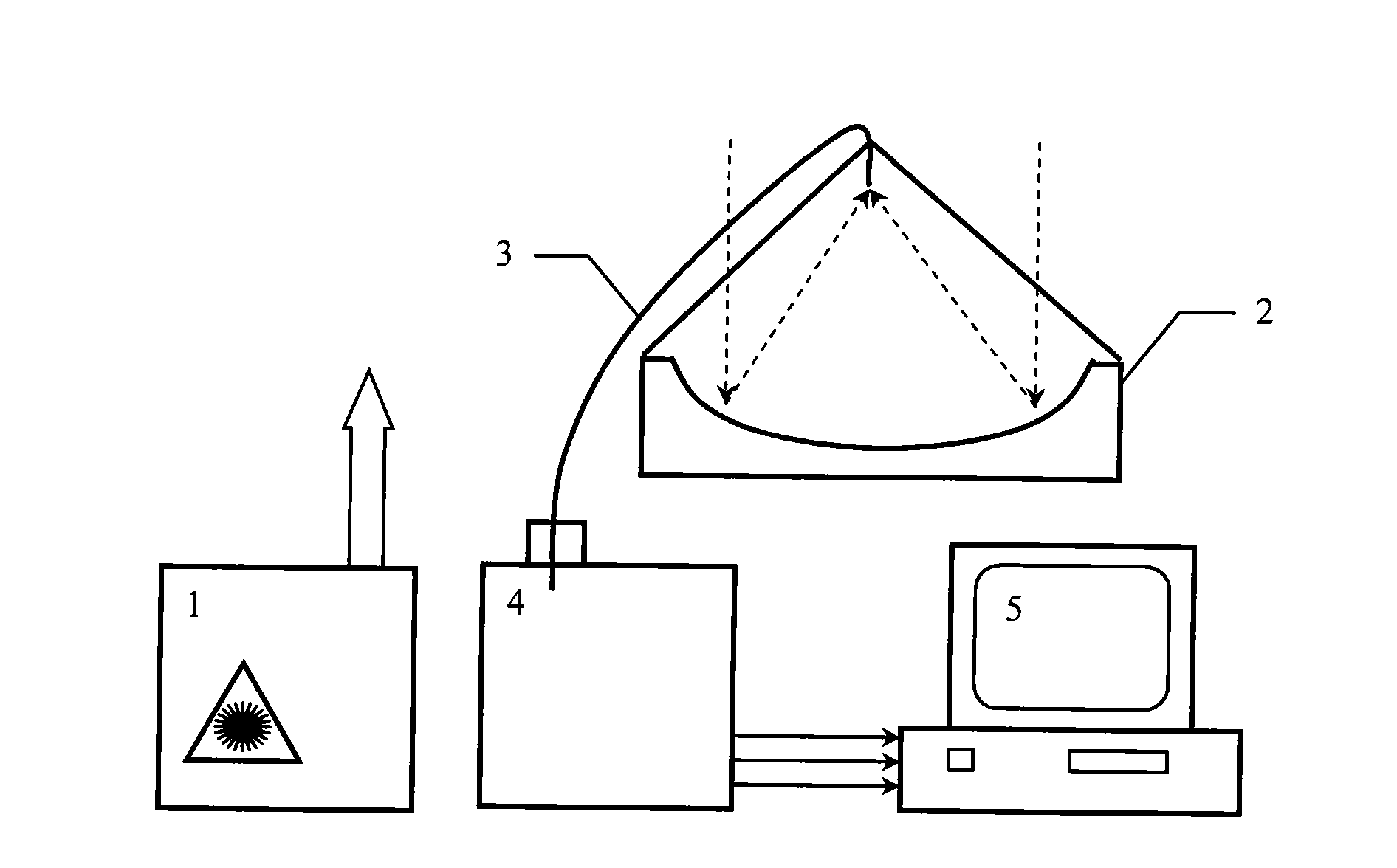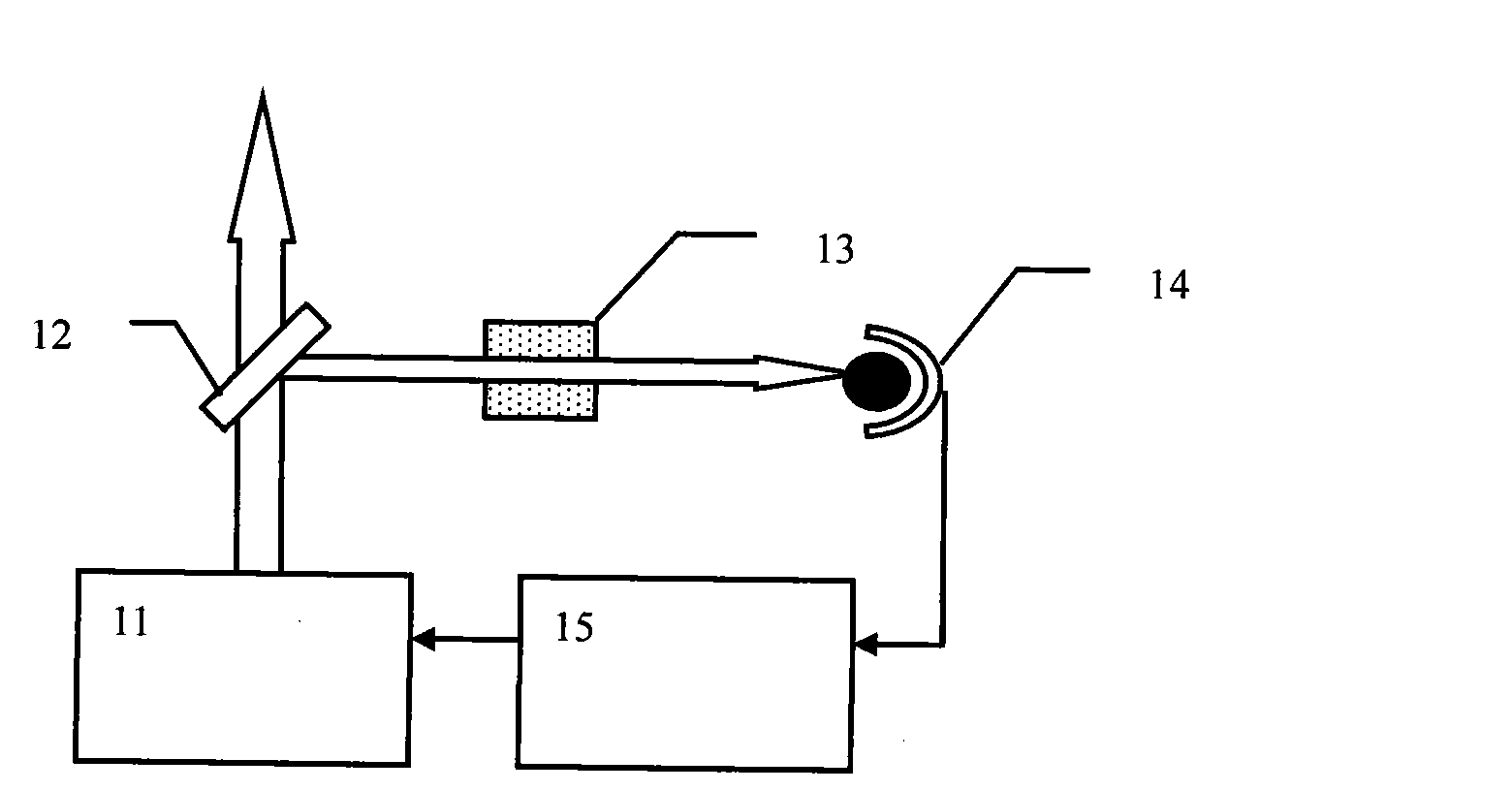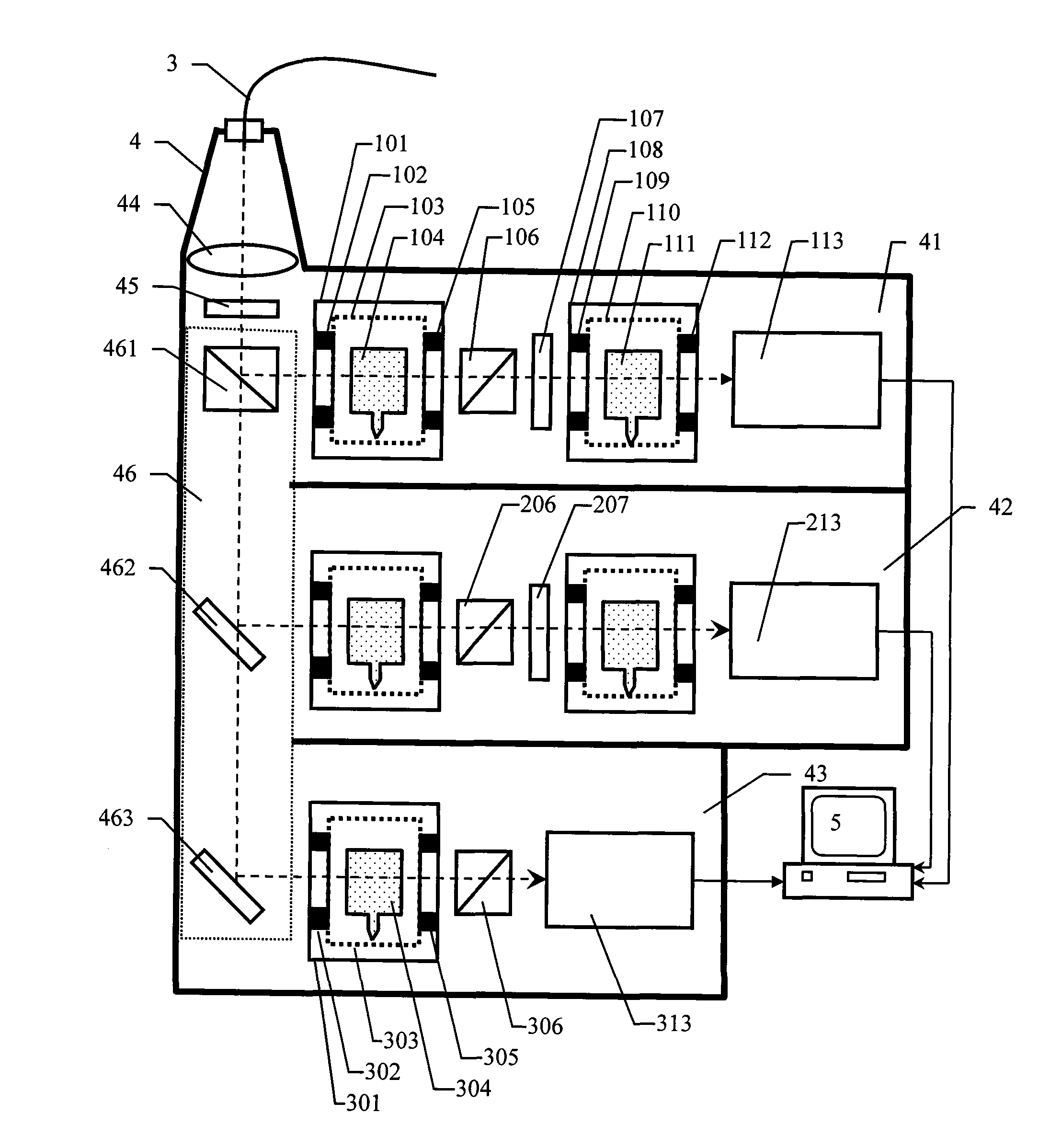High-altitude air Rayleigh scattering wind-warm syndrome laser radar
A Rayleigh scattering and laser detection technology, applied in the field of laser radar, can solve the problems of not being able to detect the atmospheric wind field, affecting the sensitivity of frequency discrimination, and affecting the detection accuracy, etc., to achieve stable wavelength without drift, small detection error, and improve signal-to-noise ratio Effect
- Summary
- Abstract
- Description
- Claims
- Application Information
AI Technical Summary
Problems solved by technology
Method used
Image
Examples
Embodiment Construction
[0037] Below in conjunction with accompanying drawing, the present invention will be further described.
[0038] 1. Structure
[0039] The high-altitude atmospheric Rayleigh scattering wind temperature detection laser radar is composed of a laser emitting unit 1, a receiving telescope 2, an optical fiber 3, a frequency discrimination unit 4 and a data acquisition and processing unit 5. The laser output direction of the laser emitting unit 1 and the axis of the receiving telescope 2 are placed perpendicular to the horizontal plane, the receiving end of the optical fiber 3 is located on the focus of the receiving telescope 2 and is coaxial with the receiving telescope 2, and the output end is placed on the convex lens 44 of the frequency discrimination unit 4 At the focal point and coaxial with the convex lens 44, the output terminals of the three photomultiplier tubes 113, 213 and 313 of the frequency discrimination unit 4 are respectively connected to the input terminals of th...
PUM
 Login to View More
Login to View More Abstract
Description
Claims
Application Information
 Login to View More
Login to View More - R&D
- Intellectual Property
- Life Sciences
- Materials
- Tech Scout
- Unparalleled Data Quality
- Higher Quality Content
- 60% Fewer Hallucinations
Browse by: Latest US Patents, China's latest patents, Technical Efficacy Thesaurus, Application Domain, Technology Topic, Popular Technical Reports.
© 2025 PatSnap. All rights reserved.Legal|Privacy policy|Modern Slavery Act Transparency Statement|Sitemap|About US| Contact US: help@patsnap.com



